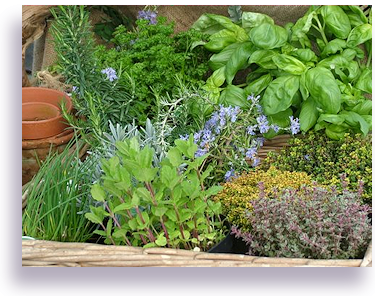Grow An Herb Garden
 Herb gardening is one way to make yourself your own little spice world. It serves a dual purpose too, in that butterflies of all kinds are attracted to the small flowers and lovely scents that excude from a well laid out herb garden.
Herb gardening is one way to make yourself your own little spice world. It serves a dual purpose too, in that butterflies of all kinds are attracted to the small flowers and lovely scents that excude from a well laid out herb garden.
First off, decide which herbs you and your family enjoy tasting the most, and then try to throw in a few that you have never tried. Experimenting with new tastes is something you might find enjoyable. Do you have a couple of recipes calling for spices you do not usually have on hand, have never tried, or maybe some that are commonly used fresh so an ample supply would be a plus?
Of course, organic is the only way to go with herb gardening, as one would like their veggie garden too. A company who carries many organic supplies that are already proven to be trustworthy are Agrothrive Organic fertilizer. Carrying a line for many uses, (and available at Lowes and Home Depot) these fertilizers and foliar feeds work great for veggies, flowers, lawns and herbs.
Make sure when you plan it, that you Choose the proper site. A spot close to the house is a good ideal, as lunch and dinnertime may have you going in and out to choose from them often. CLoeser to the house adds winter protection for you more northern growers too.
Some herbs are annuals, like basil and fennel. Letting a few of these go to seed every year will promise you new crops in spring. I let all my fennel go to seed, as I only use the delicate leaves for cooking fresh, and save all the seeds for using in Italian sauces and to perk up sausages. Swallowtail butterflies always lay their eggs on mine, and it does not hurt the plant to the point I can't use them. You may want to actually try cooking with the enormous bulb they create at the base. A spicy, licorice taste that is very yummy adds a new taste to many palette.
Although technically not an herb, garlic is a perfect addition to an herb garden. If you'd like to try your hand at it, follow this link to my Self Sustainabilty page. Tutorial on Growing Garlic.
Most herbs enjoy full sun, but there are exceptions. This gives you flexibility. Maybe you could have more than one herb garden, placing small patches in different locales around your yard. Whatever works for you.
Although shade tolerant, some dappled sunlight kissing the following will make bushier plants. These include bay, bee balm, chamomile, chervil, comfrey, ginger, lemon balm, mint, and sweet woodruff.
Herbs that can tolerate drier conditions include aloe, anise, catnip, tarragon, and thyme.
Moist spots in your yard are also a good place to try a bed containing angelica, borage, comfrey, ginger, horseradish, lovage, mint, sweet cicely, and violets.
For those of you that live in a more forest setting, try a Meadow type herb garden. Bee balm, horseradish, mint, rosemary, tansy, yarrow and violets can do well in this environment, and planted out to look natural. They will also attract beneficial insects to your area.
If space is limited, plant your herbs on the patio. Lots of people do this, with great success. Mix them up so you do not have to take up as much space, just make sure you leave enough room for expanding roots and leaves.
Whatever plants you choose, I hope you pick basil. I always plant this near my pathways, in several spots throughout the gardens. Walking by and just brushing your hand through it releases a wonderful, licorice scent into the air and always brings a smile to my face. Honeybees love it too, and added bonus.
Tags: herb gardening, herb gardening, herb garden, start an herb garden,


